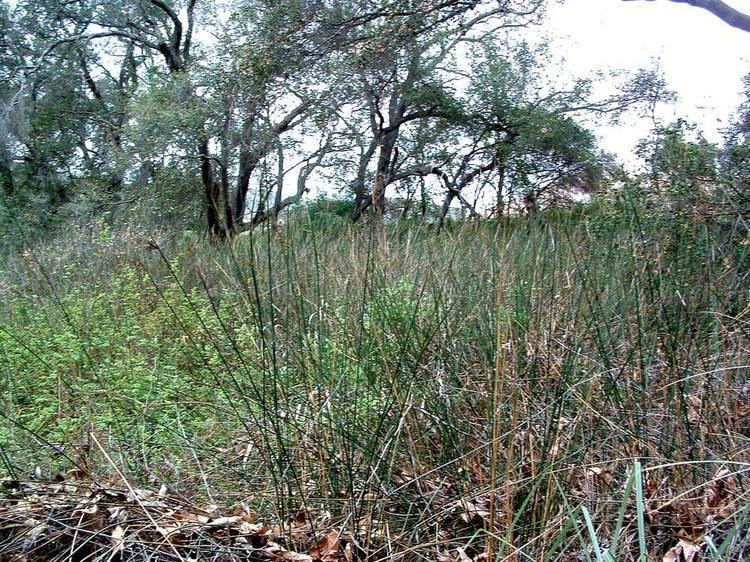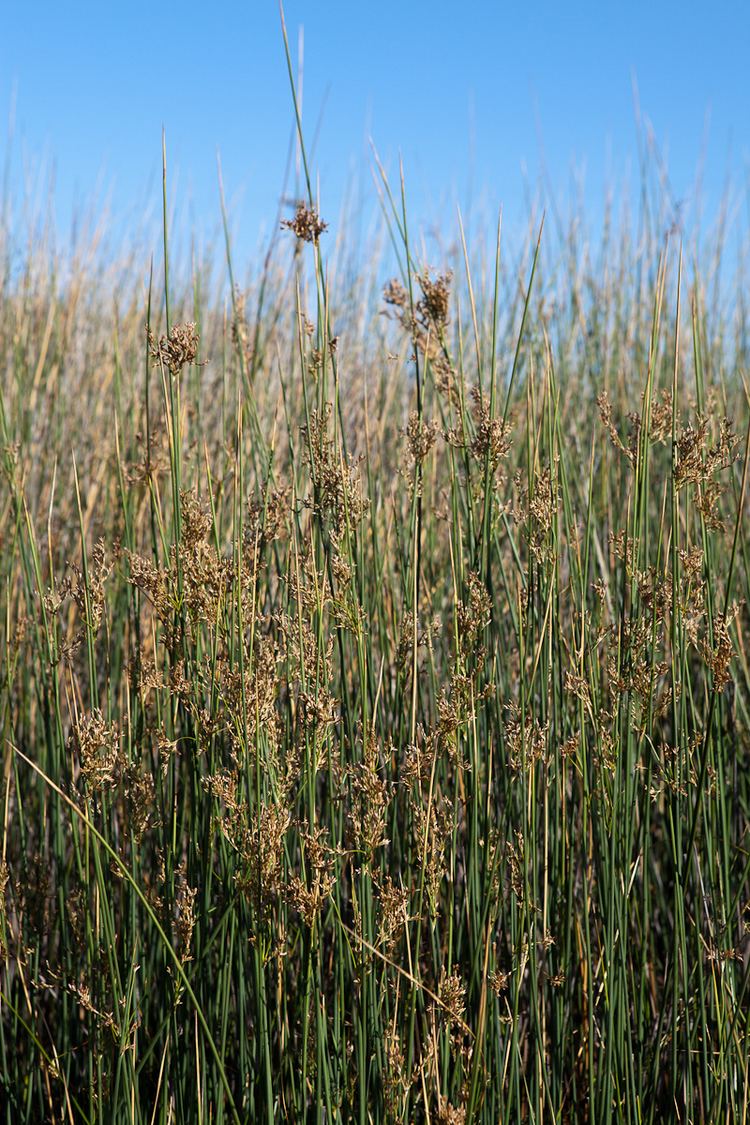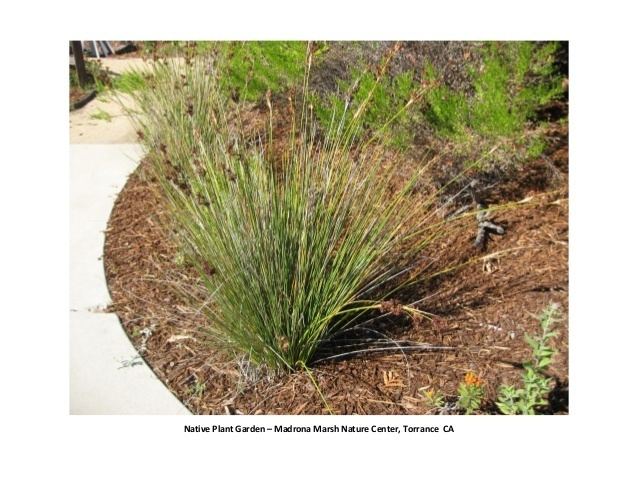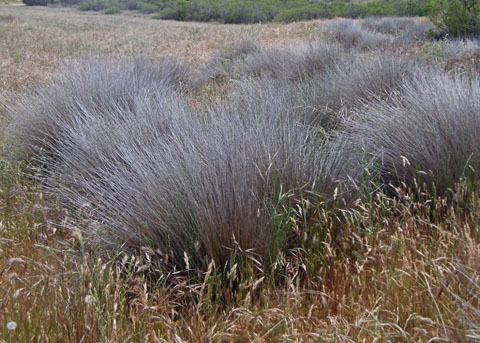Rank Species | Genus Juncus Higher classification Juncus | |
 | ||
Similar Juncus, Juncus phaeocephalus, Juncus xiphioides, Rushes, Juncus macrophyllus | ||
Juncus textilis is a species of rush known by the common name basket rush. It is endemic to California, where it grows along the coast and in the coastal mountain ranges of the southern half of the state.
Contents

Description

Juncus textilis is a rhizomatous perennial herb growing to a maximum height between 1–2 metres (3.3–6.6 ft). The stems are cylindrical with faint longitudinal grooves. The leaves lack blades and appear as small brown sheaths around the base of the stems.

The long, bushy inflorescence arises from the side of the stem and splits into long branches bearing clusters of many flowers. Each flower is cupped by small, clear bractlets and has pointed greenish brown tepals. There are six stamens with large anthers. The fruit is a dark brown, shiny capsule.
Uses

This species of rush has been used historically for basket weaving by several Native American peoples of southern California, such as the Cahuilla, Kumeyaay, and Chumash, among others.

Juncus Textilis or Basket Rush is an important plant endemic to California; Chumash people use it today for basket-making as they have been for centuries.

The rush was [sic] valued for its varied colors, from deep red to sun-dried tan; the stems were [sic] dyed black with sea plants such as Suaeda species and yellow with Psorothamnus emoryi.
